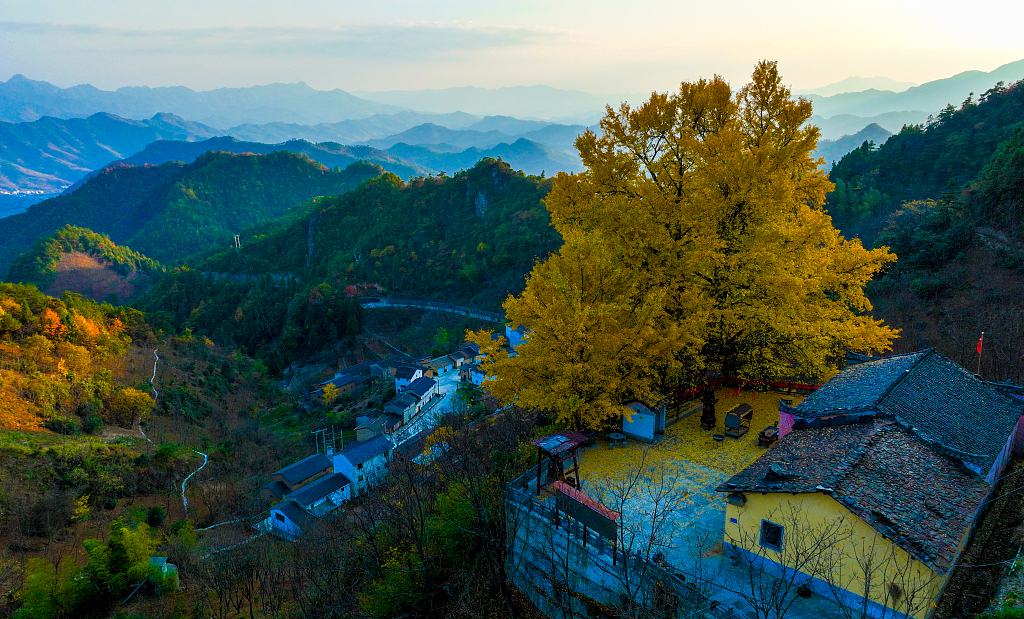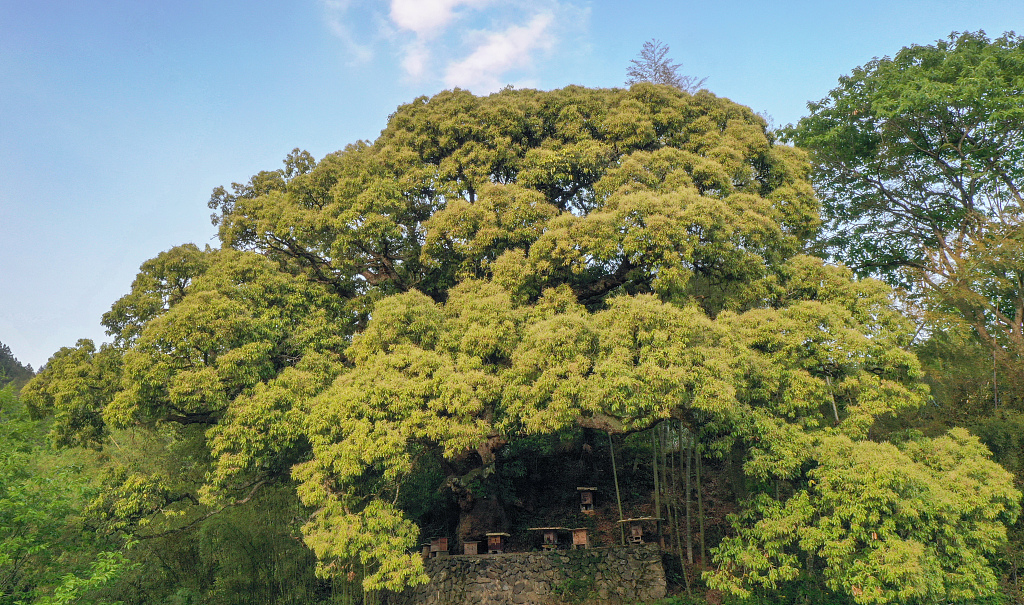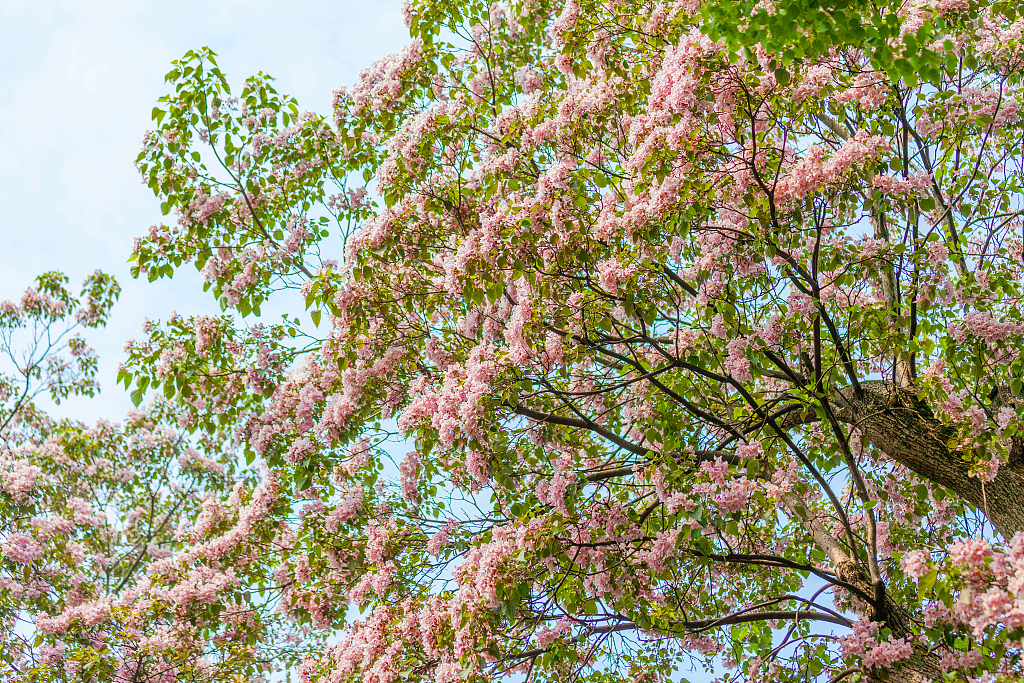In Baiguo Village in the eastern Chinese city of Hangzhou, two ancient ginkgo trees stand side by side near the local health center. One of the trees has a trunk so big that it requires six adults holding hands to encircle its robust girth.
Despite its estimated age of 1,500 years and height of 30 meters, the ancient ginkgo tree still thrives, its leaves lush and green in the summertime.
"Villagers value the tree deeply, adorning it with slips bearing their wishes and prayers," said Hong Haijie, the head of a local forestry station and one of the guardians of these ancient trees.
The ginkgoes are a part of Hangzhou's initiative to safeguard and document its 28,952 ancient trees.

A 1,360-year-old ancient ginkgo tree in a village in Hangzhou, east China's Zhejiang Province, November 8, 2022. /CFP
A 1,360-year-old ancient ginkgo tree in a village in Hangzhou, east China's Zhejiang Province, November 8, 2022. /CFP
The city has given each of its ancient trees a unique identification number to facilitate efficient management. The number can be used to access digital records, including the tree's age, height, crown width and more, Hong noted.
According to data from the Hangzhou Municipal Bureau of Forestry and Water Resources, since 2016, the city has completed the rescue and protection of 1,639 endangered ancient trees.
Currently, all ancient trees in the city have been fully registered, with electronic files and identification plaques established. Many of them have been rejuvenated through various efforts.

A 500-year-old Chinese tanbark-oak (Castanopsis sclerophylla) flowers in a village in Hangzhou, east China's Zhejiang Province, April 24, 2022. /CFP
A 500-year-old Chinese tanbark-oak (Castanopsis sclerophylla) flowers in a village in Hangzhou, east China's Zhejiang Province, April 24, 2022. /CFP
To ensure the preservation of these precious plants, Hangzhou has implemented a forest-chief system, where designated tree guardians like Hong regularly conduct patrols and inspections, not only looking out for diseases and pests but also checking for any damage due to harsh weather conditions.
Huang Baishun, an official with Hangzhou Municipal Bureau of Forestry and Water Resources, said that protecting ancient trees means preserving an excellent genetic repository.
As "living fossils," ancient trees often contain genes for longevity and resistance, which can be valuable for the genetic improvement of plants, Huang added.
Moreover, these trees have significant value for biological research, as their annual ring structures can provide insights into changes in climate, hydrology, geology, geography, biology and ecology.

A 530-year-old Catalpa bungei tree flowers at a temple in Hangzhou, east China's Zhejiang Province, April 17, 2022. /CFP
A 530-year-old Catalpa bungei tree flowers at a temple in Hangzhou, east China's Zhejiang Province, April 17, 2022. /CFP
Statistics show that of the 28,952 ancient trees in Hangzhou, 1,826 are over 500 years old, with the oldest being over 2,000 years old.
To enhance public involvement and awareness, Hangzhou has introduced initiatives like voice-guided tours through a special themed park, allowing visitors to learn about the culture of ancient trees. The city has established 28 ancient-tree cultural parks aimed at highlighting the historical and cultural significance of ancient trees.
(All images via CFP)
(If you have specific expertise and want to contribute, or if you have a topic of interest that you'd like to share with us, please email us at nature@cgtn.com.)
Source(s): Xinhua News Agency